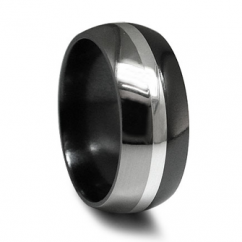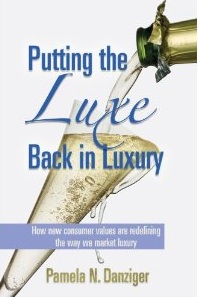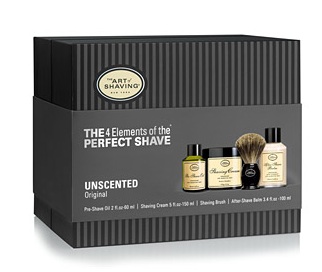Articles and News
NEW STUDY SAYS MEN’S JEWELRY, CONTEMPORARY METALS APPEAL TO AFFLUENT BUYERS | September 13, 2011 (0 comments)

New York, NY—Luxury spending numbers last year finally reached prerecession levels, says Pamela Danziger, president of Unity Marketing, the Stevens, PA-based luxury market research firm. But although luxury spending overall has moderated since then, jewelry spending has held up better than other categories. And a new study from Unity finds that men’s jewelry, contemporary metals, and alternative shopping channels are capturing an increasing share of affluent consumers’ jewelry dollars. (A men's titanium and sterling silver ring by Edward Mirell is shown at left.)
Danziger, one of the featured speakers at the 2011 Rapaport Diamond Conference held here Monday, presented some of the results of Unity’s just-completed jewelry study at the conference. Some of the key findings fromUnity Marketing’s luxury jewelry study are:
- Men’s jewelry sales are growing among affluent consumers. Danziger attributes the increasing importance of this category to men finding a way to set themselves apart, especially in a more casual workplace.
- Growing demand among affluent African-American and Hispanic consumers. While the total income demographics for both groups still are below the general population, jewelry demand among the high earners in both groups is on the rise.
- White metals and alternative metals are growing
- Costume jewelry, semi-precious gems, and faux gems are hot with affluent shoppers.
- Jewelry shoppers are looking outside traditional jewelry store channels, including department stores, discounters like Costco, fashion boutiques, art galleries and, of course, online.
Unity’s most recent Luxury Consumption Index—a quarterly pulse-check of consumer sentiment among the affluent consumers—took a nosedive in July, showing the sharpest decline (16 points) in luxury consumer confidence since 2007-2008. Overall luxury spending—which peaked in Q2 2010—is down, Danziger told the audience Monday—but jewelry has not shown the same marked decline, remaining relatively unchanged.
“The ultra-affluent are driving spending on jewelry,” says Danziger, though the numbers are lower among the other affluent group she’s dubbed “HENRY,” an acronym for “High Earners Not Rich Yet.”
In her research—much of which is discussed in her latest book, Putting the Luxe Back in Luxury—she segments the affluent market into two groups, the ultra-affluent and the HENRYs. The total affluent market, with household income starting at $100,000 annually, comprises the top 20% of American households. These are the heavy lifters in the U.S. consumer economy, controlling 50% of all U.S. income, 40% of all consumer spending, and 90% of all discretionary income.

Pamela Danziger, author of Putting the Luxe Back in Luxury, says men's jewelry, alternative metals, and non-jewelry-store shopping channels are trending with affluent consumers.
Within that top quintile, 14% have incomes between $100,000 and $180,000. 5% of Americans have incomes from $180,001 to $249,999, while those earning $250,000 or more comprise only 1% of the U.S. population—fewer than 3 million households nationwide, says Danziger.
This 1% is considered the “ultra-affluent,” while the HENRY demographic is comprised of the households in the $100,000 to $249,999 income brackets. Among those, 59% fall in the $100,000-$149,999 bracket, with an average income of $119,749; 22% are earning between $150,000 and $199,999; and 9% between $200,000 and $249,999.
“I realize someone in New York is going to wonder how $100,000 can be considered affluent, but a person earning that same salary in Des Moines, Iowa, is living pretty well,” Danziger told the audience. Danziger gave an exclusive interview to The Centurion in its May 25 edition; in it she details the HENRY audience further. Re-read the article here.
Ron Kurtz, president of the American Affluence Research Center, another luxury think-tank, concurs that most of the growth of the luxury market in recent years has come from the $100,000 to $250,000 income customer, who has the means to purchase some true luxury products, but not the wealth to sustain that kind of spending on a regular basis. AARC sets the bar higher for what it calls “true luxury” customers, with an annual income of $982,000. Its definition of affluent has an average income of $256,000. Overall, both Danziger and AARC agree that for luxury marketers, there is strength in numbers (24 million U.S. households) and in the long term it’s more profitable to go after the broader scale affluent HENRY level customer than the elusive ultra-affluent.
This is especially important for the next eight to 10 years, says Danziger, because while the overall window of affluence is between age 35 and 54, consumers move through the window in predictable stages. From age 35-54 they’re in the acquisition stage, and from age 45-54, they mostly have what they want. But the up and coming Millennial generation—the next big wave of spenders—hasn’t yet moved into that window. They’re now age 25-34, and while they have a taste for luxury (good news) they don’t yet have the means to buy it. It’ll be 10 years before that demographic is truly within the window of affluence. Meanwhile, Danziger warns jewelers to keep an eye on two trends: one, the trend toward marriage is lower among this group of 25-34 year olds than previous groups, and two, the trend toward less expensive alternative metals for bridal jewelry is up.
While other research has shown that Millennials are willing to spend for bridal jewelry—and especially that Millennial women who do want a diamond expect a much larger diamond than previous generations—Danziger is not the only researcher to observe that more Millennials than previous generations are electing to cohabit without marriage.
Competition moves up. Not surprisingly, the middle class came out of the recession much worse than the affluent. As a result, many solidly middle-class marketers are now heading up-market to try and recoup their losses. For example, consumer-products giant Procter and Gamble targets the affluent with its tony Fekkai hair care line and its Art of Shaving and ZIRH skin care lines for men, while its Regenerist products are edging the drugstore women’s skin care brand Olay into department store price points. While it may not seem like shampoo or moisturizer is much competition for a diamond necklace, remember it’s all share of wallet, says Danziger.

No Barbasol in a can: Proctor & Gamble's upscale Art of Shaving division offers an introductory kit--and an elegant morning ritual for men--for $100. It's part of the consumer-products giant's expansion from mass to class.
In the jewelry industry, Danziger illustrated how Zales is moving into more luxurious territory with the introduction of its Vera Wang Love line, and targeting a younger up-and-coming luxury customer with its Jessica Simpson license.
Consumers across the board want more for less, and it’s no different for the affluent, says Danziger. They’re looking for high quality for less, which is borne out in the popularity of flash-sale sites and warehouse clubs like Costco.
“By being good shoppers, people can live one rung higher on the luxury bar than their income might otherwise allow.”
Indeed, she said, the Merriam-Webster 2010 Word of the Year was “austerity.” While affluent consumers might not be living the true definition of austerity, neither are they spending money on status for status’ sake, she said. That definitely is out as a driver of luxury consumption. As a result, retailers need to think like Consumer Reports as well as Vogue. The experience matters—a lot—but so does the inherent value of the product.
Perception is reality. To illustrate, Danziger described an experiment where two groups of affluent consumers were asked to evaluate the quality of a meal. The food served to both groups was identical—all purchased from Costco at the same time and prepared as directed on the packages—but the first group was served on plain paper plates with plastic silverware and a menu card telling them they’d be tasting “fish, potatoes, green beans, and dessert.” The second group had linen tablecloths, fine china, and a menu card describing panko breaded tilapia, four-cheese scalloped potatoes, green beans sautéed with garlic and rosemary, and a dark chocolate cake. Not surprisingly, the second group rated the food much higher than the first: on a scale of one to 10, the first group rated the meal 3.4, the second, eight out of 10. So the experience matters.
“Branding is more than a label, but the label is important,” she said.
When asked why luxury customers who place a value on the shopping experience would shop at Costco, Danziger said, “Costco is an experience.” It’s not the identical experience of a luxury jewelry store, but the customer knows that going in, and isn’t disappointed. They’re already sold on the value of the brand—for example, Movado watches—and they’re looking to get the brand they want at a lower price. This isn’t the customer who wants the newest and most exclusive limited-edition model, it’s the customer who wants value for less.

It's not fancy, but it is a legitimate retail experience, and one that consumers know what to expect, says Danziger.
Consumers ultimately define what value is, but marketers can influence the customer’s perception, she said.







